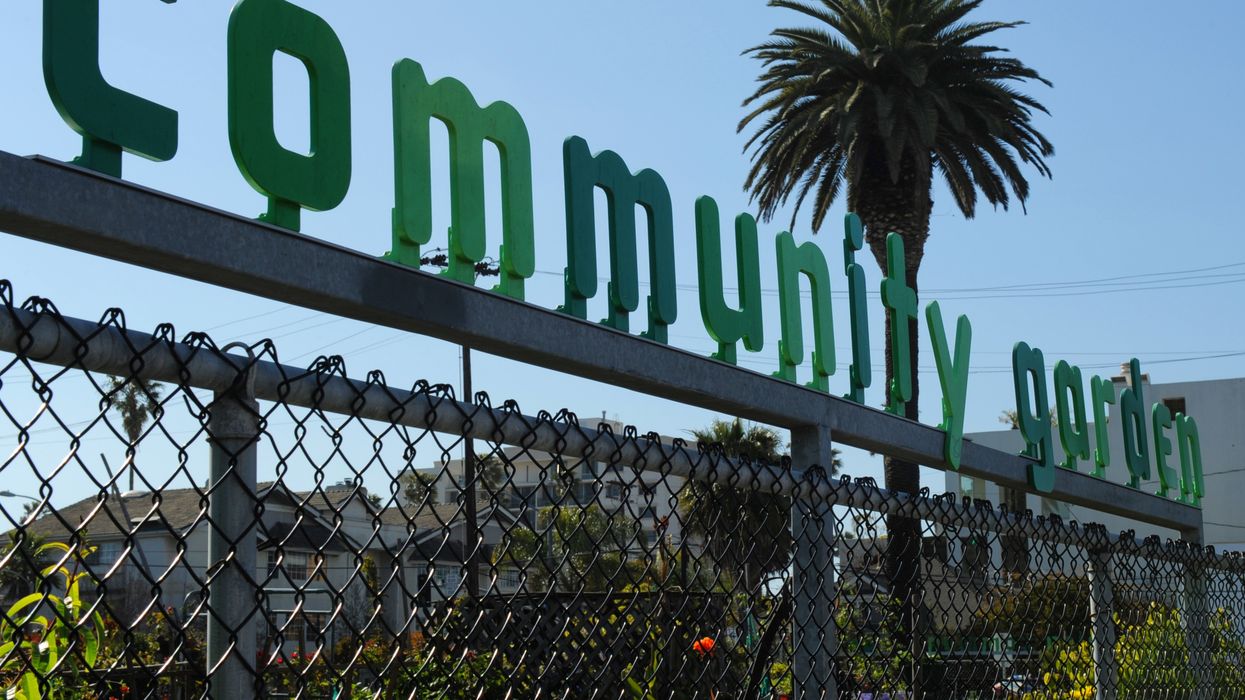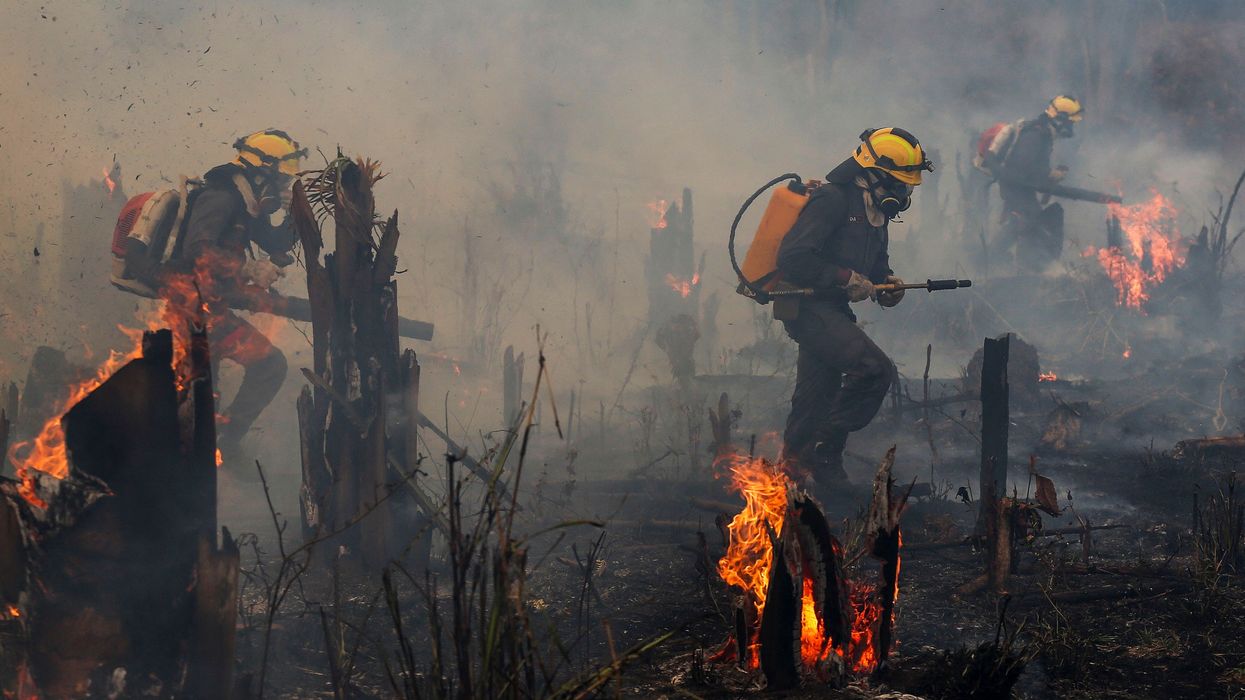The Commons Are an Opportunity, Not a Tragedy
European peasants devised them as a means of surviving within structures of domination, but we could use commons not merely to survive domination but replace it.
A thousand people gather on the Green, sharing umbrellas and straining to hear the valedictorian above the thunderstorm. She’s talking about the Green, a 16-acre park at the center of town where townspeople get together for concerts, picnics, and the annual high school graduation. The speaker does not mention that we are sitting over bodies interred in the 17th century, for the Green has served other purposes: At various times it’s been a burial ground, a marching ground, a grazing ground, and even a campground for townsfolk who lived too far from church to make it to town and home in the same day.
Today, the Green is a park owned by the town and overseen by a committee, but for at least the first two centuries of its existence, it served as an economically productive space, governed by the townsfolk themselves. It was, in other words, a commons.
As recently as the 19th century, North America included many examples of commons customs. Indigenous nations hunted and gardened in spaces reserved for all their members, often extending rights to other communities by diplomacy and hospitality. White agrarians shared meadow and wetlands in Massachusetts, cooperated in management of lobster fisheries in Maine, and communicated over the “law of the woods” in the Adirondacks. But, as private property and state ownership pushed out every other form of possession, practices of collective ownership fell into neglect and are poorly understood today.
At base, a commons is a social relationship of the useable Earth that is neither private nor state property but owned and governed by its constituents to meet their specific needs.
In the 20th century, anti-communist ideologues attacked the entire idea. A single essay, “The Tragedy of the Commons,” written in 1968 by the biologist Garret Hardin, did more damage to our understanding than anything written by an English lord circa 1668. Hardin’s parable of greedy shepherds deploying their livestock to nibble up every last blade of grass in a universalized common meadow assumes that the commoners couldn’t get together to make decisions about how best to use the space. Lacking history, anthropology, or any evidence, Hardin’s essay amounts to little more than his own dismal view of human nature. Thinkers on the left, meanwhile, have tended to project their own assumptions onto commons customs without understanding how or why they came to be.
A commons is not a tragedy of resource depletion, not a collective farm, not a relic of a savage past, and not proof of ancient communism. As a form of land, it is neither res nullis (owned by no one, like wild animals or schools of fish) nor res communis (owned by everyone, like Antarctica or the Moon). “The word ‘common’ means ‘together with others,’” wrote the 13th-century legal scholar Henry de Bracton. In his world, a commons was an agricultural village in which each household tended its own fields and pasture and made collective decisions about the whole settlement, but commons have taken many other forms as well. At base, it’s a social relationship of the useable Earth that is neither private nor state property but owned and governed by its constituents to meet their specific needs.
This relationship originated in specific circumstances. After the implosion of the Western Roman Empire around A.D. 500, peasants in Europe enjoyed great freedom from centralized authority. By about the year 900, however, the thuggish war lords who developed political power in the vacuum began attacking them, capturing them on little kingdoms called manors. These new lords demanded from peasants the various products of their labor, like flour, butter, beer, and lambs, which meant the peasants all had the same problem: how to endure lordly appropriation while thriving themselves. As a way of smoothing out conflict and building efficiency, village councils began to decide where cattle should graze, where wheat should be planted, and which fields should lie fallow.
By around the 12th or 13th century, peasants throughout western Europe found that commonly managing fields and pasture saved them a little labor, resulting in marginal benefits. A family possessed their own fields and livestock, but they allowed the village to make decisions about production in an overall setting that no one really owned but that the peasants claimed as their proprietary realm.
This went on for hundreds of years, through famine and pandemic, but in England by the 17th century something had changed. Lords sought to extinguish commons customs by law, evict peasants from farms and villages, and claim all the land as their own in a process known as enclosure. Capitalism is literally founded on this dispossession of collective rights, which immediately provoked commoners to vehemently defend those rights. In this ongoing conflict, advocates of peasants and opponents of capitalism uphold the commons as an alternative.
Commons evokes feelings of morality and justice when set against enclosure and the poverty and suffering it still causes. But it is not inherently just.
This is why many on the left tend to think of the colonization of North America, and elsewhere along the frontiers of the British Empire, as a conflict between capital and commons. But it’s not that simple. The English peasants who founded New England—uninvited by the Wampanoag, Narragansett, Lenape, Menunkatuck, Pequot, and other Algonquin peoples—had themselves fled enclosure. They didn’t arrive as profit-maximizing individuals, but as communities seeking their own survival. The Guilford Covenant of 1639 puts it clearly: “We will, the Lord assisting us, sit down and join ourselves together in one entire plantation and to be helpful each to other in any common work, according to every man’s ability and as need shall require.” You’d be forgiven for thinking that Karl Marx had written for them; but the point is that, at least at first, Indigenous North American societies with their own customs of collective use came into conflict with European societies strikingly similar to them. Colonizers had no reason or inclination to carve up the landscape into real estate. That idea was not well developed even in England, and it was a century before it took hold in the colonies. The point is cautionary: Commons evokes feelings of morality and justice when set against enclosure and the poverty and suffering it still causes. But it is not inherently just.
Despite the onslaught of private property, common property still exists all over the world. In India, common rights exist over forests, grazing land, and bodies of water. By one estimate, three-quarters of Africa is owned and governed by communities and 90% of rural Africans farm and hunt on this community land. In the United States, the Agrarian Trust buys farmland and places it in a community-centered, tax-exempt trust. The group then provides affordable leases to farmers so they can grow food for communities without the burden of paying down a mortgage. It’s not a commons in the sense of collective governance but in the anti-capitalist tradition: It aims to remove land from the market, permanently.
We could do the same thing on a larger scale by creating commons communities on federal land or by eminent domain, creating spaces for farming, hunting, and wood cutting where the people who use the space would make all decisions but could not sell it. Not everyone wants to live this way, but there is no reason the same principles couldn’t work in suburbs and cities. Dozens of community gardens all over Los Angeles County, for example, are governed by the gardeners themselves.
European peasants devised the commons as a means of surviving within structures of domination, but we could use commons not merely to survive domination but replace it with a different species of citizenship, one that enjoins land and democracy. We could begin to reclaim our lives from the capitalist market by moving the commons from the margins of society to the center of our communities, exactly where they began.

